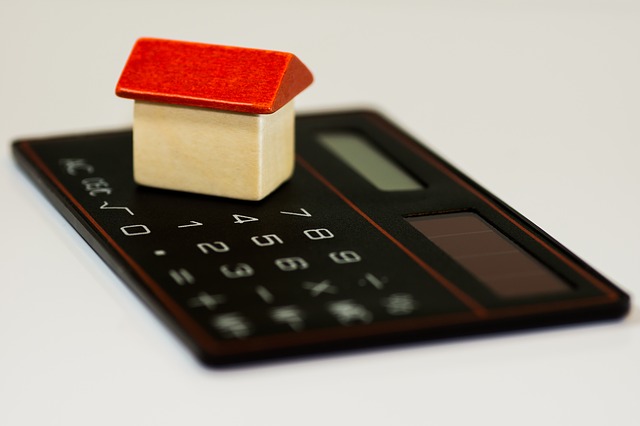 Houses for a dollar. Millions (perhaps billions) in tax incentives. Reclaiming contaminated land. Partnering with Walmart to build town centers. What do all of these things have in common? They are examples of exciting redevelopment opportunities in different parts of America.
Houses for a dollar. Millions (perhaps billions) in tax incentives. Reclaiming contaminated land. Partnering with Walmart to build town centers. What do all of these things have in common? They are examples of exciting redevelopment opportunities in different parts of America.
HUD Dollar Homes
The U.S. Department of Housing and Urban Development (HUD) offers homes for $1. Local governments may purchase them if they listed for sale without finding a buyer for six months. HUD acquired these homes through foreclosures.
The local governments purchase the homes for $1 so that they can fix them up and then re-sell them to low- to moderate-income families as part of a neighborhood revitalization program.
For investors and home buyers, there are also many bargain-priced HUD homes for sale, which need rehabilitation. First-responders and teachers get a 50% discount. Non-profits get a 30% discount.
Tax Incentives
Tax incentives attract investments by businesses in economically-disadvantaged areas. Federal, state, and local programs encourage redevelopment in many areas. Tax abatements come from the state, county, and the local community.
In 2018, the U.S. Treasury Department created Opportunity Zones in many states to give preferential tax treatment for investments made in these zones. Investors in these zones can defer federal income tax on capital gains. Under the new tax code, investments in Opportunity Zones held for 10 years have zero capital gains tax.
Super Fund Site Reuse
The Environmental Protection Agency (EPA) has a Superfund Redevelopment Initiative (SRI) to clean up toxic sites and reclaim contaminated land. There are now quite a few Superfund sites that went through the cleanup process and have EPA approval for reuse. Some successful projects under the SRI program include large solar energy collection arrays built on reclaimed land.
Walmart Parking Lots To Become Town Centers
Walmart plans to partner with developers to build Walmart Town Centers on underutilized acreage that surrounds some of its Walmart Super Centers.
Walmart invites small businesses and local communities to work with them on these redevelopment projects. Some plans include dog parks, day care centers, health clinics, farmer’s markets, basketball courts, and green spaces for picnics.
Sounds a bit like what downtown Main Street used to offer before Walmart came to town. Doesn’t it? Now, with these new redevelopment plans, the community space of a town center is coming back to some American towns.
Conclusion
Opportunities in redevelopment received support on a national level by the JOBS Act and the recent changes in the tax code. There are many redevelopment success stories happening in places where before everyone only saw problems and now real estate investors and developers find opportunities.
Whether you are in the market for a single family residence or a commercial investment, be sure to consult with your trusted real estate professional.
 Earth Day is celebrated each year in April to remind us all of the benefits of ecologically-sound living that is more in harmony with Mother Earth. There is quite a bit of positive news when it comes to going “green.” There are significant benefits for home sales.
Earth Day is celebrated each year in April to remind us all of the benefits of ecologically-sound living that is more in harmony with Mother Earth. There is quite a bit of positive news when it comes to going “green.” There are significant benefits for home sales. Perhaps you plan to sell your home in the next few months or years. Keeping your garage organized can save time and ensure that you have storage space when you need it most.
Perhaps you plan to sell your home in the next few months or years. Keeping your garage organized can save time and ensure that you have storage space when you need it most. If you’re staging your home to sell, you may find yourself with more stuff than space. Rather than selling possessions that you’d rather not part with, you can put your things into short-term storage until your home sells and you’re able to move.
If you’re staging your home to sell, you may find yourself with more stuff than space. Rather than selling possessions that you’d rather not part with, you can put your things into short-term storage until your home sells and you’re able to move. From small touches such as new lighting to larger efforts such as tiling the porch or stoop, creating curb appeal is one of the best investments you can make to resell your home fast.
From small touches such as new lighting to larger efforts such as tiling the porch or stoop, creating curb appeal is one of the best investments you can make to resell your home fast. Fixing up your home to sell doesn’t have to be a budget-breaker. You can revitalize the look of your property with a little bit of paint in the right places.
Fixing up your home to sell doesn’t have to be a budget-breaker. You can revitalize the look of your property with a little bit of paint in the right places. Members of the Federal Reserve’s Federal Open Market Committee voted to hold the target range of the federal funds rate to its current range of 2.25 to 2.50 percent. The minutes of the most recent Committee meeting cited softening domestic and global economic conditions as reason for not raising the target federal funds range.
Members of the Federal Reserve’s Federal Open Market Committee voted to hold the target range of the federal funds rate to its current range of 2.25 to 2.50 percent. The minutes of the most recent Committee meeting cited softening domestic and global economic conditions as reason for not raising the target federal funds range. Real estate agents are constantly looking for new listings, which will attract potential buyers. We no longer need to limit our search for good listings to planet Earth because Mars is now for sale.
Real estate agents are constantly looking for new listings, which will attract potential buyers. We no longer need to limit our search for good listings to planet Earth because Mars is now for sale. The right home renovation strategy can increase property values and improve the comfort and utility of your space. However, your actions could have a harsh impact on our natural resources.
The right home renovation strategy can increase property values and improve the comfort and utility of your space. However, your actions could have a harsh impact on our natural resources. Are you planning on using a mortgage to help cover the cost of a new home? If so, you will want to prepare your finances and figure out how you will manage all those wallet-draining monthly expenses. Let’s take a look at how to run a quick financial health check to ensure you are ready to apply for a mortgage.
Are you planning on using a mortgage to help cover the cost of a new home? If so, you will want to prepare your finances and figure out how you will manage all those wallet-draining monthly expenses. Let’s take a look at how to run a quick financial health check to ensure you are ready to apply for a mortgage.